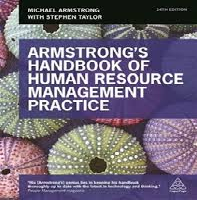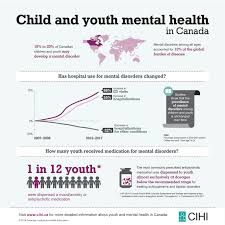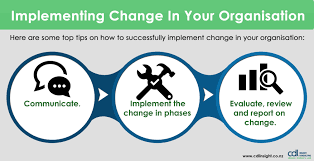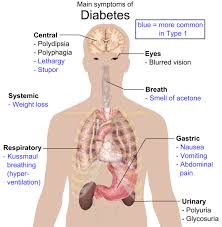The Impact of Traffic Jam On Employees Efficiency Order Instructions: This week you are exploring the role of epistemology in research and the philosophical assumptions that provide insight into management research.

You are gaining an understanding of how your own philosophical assumptions can influence your research and even the process of selecting a problem or issue to study.
In this week’s assignment, you will begin to generate a broadly specified topic for the management dissertation project that you will eventually carry out. In this first week, you are required to think about some of the key parameters that may influence your choice of topic and to communicate initial ideas to the module Instructor for comment.
After receiving Instructor feedback, you will review and refine your choice of topic, and that refined outline will then function as a foundation for subsequent work to be carried out in the module.
In this week’s submission, you should address each of the following points:
1) 1) Outline the general management topic or problem that you plan to address in your dissertation. Use the dissertation Proposal Proforma and refer to the Proforma Notes, located in Week 1 Learning Resources (see ‘Handouts’ ) to help you with this.
2) Explain how your selection of the topic or problem is influenced by your epistemological perspective(s).
This assignment will support the draft of Section 1 of your Proposal. Remember to write concisely.
Important note: the topic that I want to choose is:
The impact of traffic congestion on the performance of the employees in Qatar. Suggestions and solutions
The Impact of Traffic Jam On Employees Efficiency Sample Answer
The Impact of Traffic Jam On Employees Efficiency, Productivity and Enthusiasm in Qatar: Preventions and Solutions
- Aim, objectives, and feasibility of the dissertation
The Research Aim
The aim of the proposed research study is to delve into the impact that traffic jam in Qatar has on employees’ enthusiasm, productivity, efficiency, and probable solutions to the issue.
The Research Objective
The objective of this research study is to examine how the enthusiasm, productivity, and efficiency of employees are affected adversely by everyday traffic jams in Qatar. It is notable that due to the traffic jams, some employees may be late to work when caught up in the jam. The research will also explore the possible ways in which this problem could be effectively solved in order to improve the enthusiasm, productivity, and efficiency of employees in Qatar.
Research Question
- What is the impact of a traffic jam on efficiency, productivity and efficiency of employees in Qatar?
- What are the possible solutions to this problem?
Feasibility
The proposed research is feasible since all the necessary resources required to complete the research satisfactorily are available and accessible to the researcher. For instance, the researcher has access to the requisite data, consent from the organization, and willingness of subjects to be interviewed or questioned.
Justification of the topic
The research topic was selected because of the potential benefits the findings would present not just to my firm, but also to the industry in general. These benefits include the fact that the effect of a traffic jam on the efficiency, productivity, and enthusiasm of employees would be understood clearly and the solutions which the company or the industry can use will be discovered or learned through this research. Epistemology is concerned with the beliefs of people with regard to how an individual may discover knowledge regarding the world (Harmon & Mayer, 1986). Therefore, the selection of the topic is influenced by epistemological perspective in that the researcher will focus on the beliefs of the study subjects about how they think traffic jam in Qatar impacts their productivity, efficiency and productivity. Moreover, epistemology focuses on issues concerning the creation as well as dissemination of knowledge (Easterby-Smith, Thorpe & Jackson, 2012). As such, the researcher will focus on issues concerning the creation as well as the distribution of knowledge about the impacts of traffic jam in Qatar on the productivity, enthusiasm, and efficiency of employees and the possible solutions.
-
The Impact of Traffic Jam On Employees Efficiency Literature review
For Qatar in the present decade, traffic congestion is a very challenging issue in city management. Ongoing and fast urbanization in Qatar has led to tremendous congestion levels on roads and therefore extreme demands for service provision and infrastructure in Qatar’s urban areas (Planells & Griffin 2014). The situation has only been worsened by limited available space for construction of new roads, fast population growth, as well as lack of sufficient funds invested for the development of the country’s transport infrastructure in the past (Planells & Griffin 2014).
In their study, Somuyima, Fadare and Ayantoyinbo (2015) explored the cost of a traffic jam on the productivity of workers in the Nigerian city of Lagos. The researchers purposively selected road networks which are usually prone to traffic jams. Their results demonstrated that there is an inverse correlation between the productivity of workers and traffic jam in the city, meaning that a rise in traffic congestion in Lagos would result in low employee productivity (Somuyima, Fadare & Ayantoyinbo 2015).
Productivity is an essential aim of economic policy (Leeuw & Wright 2012). In their study, David and Gregory (2011) learned that with all things being equal, an urban region in which workers travel less time to get to their workplaces would be more productive in comparison to an urban area in which travel times are longer. On the whole, employees in an urban area with no traffic jam would be more efficient and more productive than employees in urban areas with traffic jams (Weisbrod, Vary & Treyz 2011).
- Research methodology and methods
The epistemological approach that would be used in the proposed research study is the Relativist approach. With this approach, the researcher will assume a social constructionist perspective by starting with research questions, use interviews to collect views of people which would then be triangulated and compared. From these, theories would be generated. The research method would be qualitative. Qualitative research is the most appropriate for the proposed study since it will allow the researcher to gain insight; investigate the complexity, depth and richness that is intrinsic within the phenomenon. Data would be collected through the use of qualitative interviews with open-ended questions.
- Timing milestones
Milestone |
Description |
Due date |
| 1 | Stage 1: Area of interest identified | May 15, 2016 |
| 2 | Stage 2: Specific topic selected | May 28, 2016 |
| 3 | Stage 3: Topic refined to develop the dissertation proposal | June 2, 2016 |
| 4 | Stage 4: Proposal written and submitted | June 5, 2016 |
| 5 | Stage 5: Collection of data and information | June 15, 2016 |
| 6 | Stage 6: Analysis and interpretation of the collected data/information | September 9, 2016 |
| 7 | Stage 7: Writing up | November 3, 2016 |
| 8 | Stage 8: Final draft prepared— submission of the dissertation | December 17, 2016 |
| 9 | Final Deadline—9 months from module start date. | January 25, 2017 |
The Impact of Traffic Jam On Employees Efficiency References
David, H., & Gregory F 2011, Gridlock and growth: The effect of traffic congestion on regional economic performance. Transportation Science, 4(7): 4-18
Easterby-Smith, M., Thorpe, R. & Jackson, P 2012, Management research, 4th ed. London: SAGE Publications.
Harmon, M. M., & R. T. Mayer. (1986), Organization Theory for Public Administration, Boston: Little, Brown
Leeuw, W & Wright, DL 2012, Measuring worker productivity comparing Indiana to its neighbors. Economic Systems Research, 16(9): 12-19
Planells, CR., & Griffin, I 2014, Traffic congestion in Doha: Causes and solutions. Retrieved from http://www.qatarconstructionnews.com/traffic-congestion-doha-causes-solutions/
Somuyima, AO, Fadare, SO., & Ayantoyinbo, BB 2015, Analysis of the cost of traffic congestion on workers’ productivity in a mega city of a developing economy. International Review of Management and Business Research, 4(3): 1-13
Weisbrod, G., Vary, D., & Treyz, G 2011, Economic implications of congestion. National Cooperative Highway Research Program (NCHRP) Report 463. Washington, DC: Transportation Research Board. Transportation Research Board.












